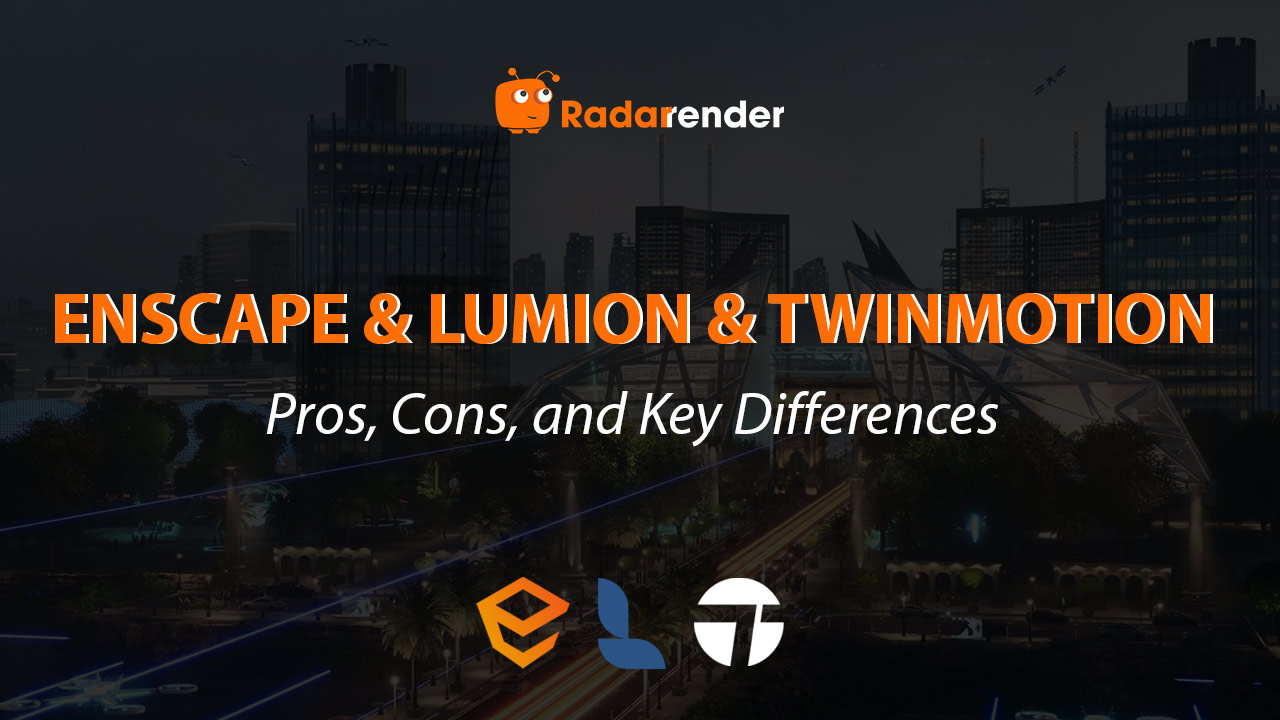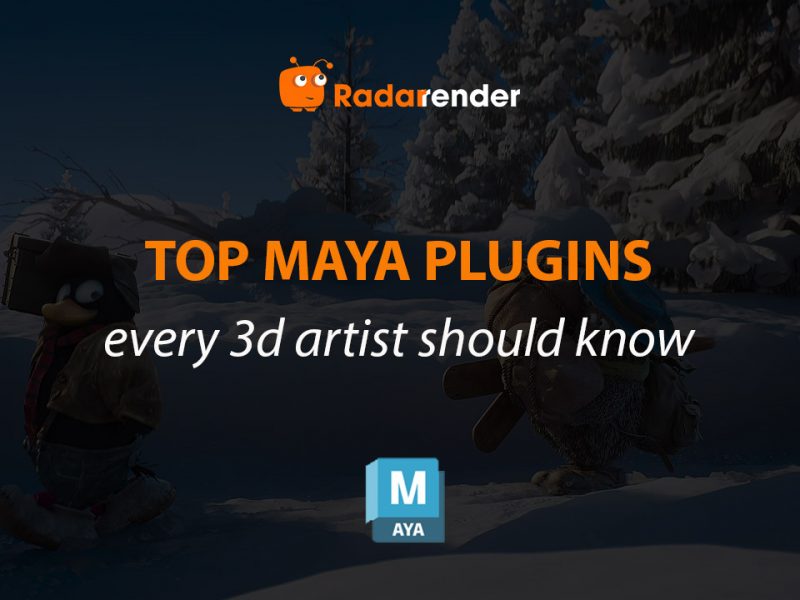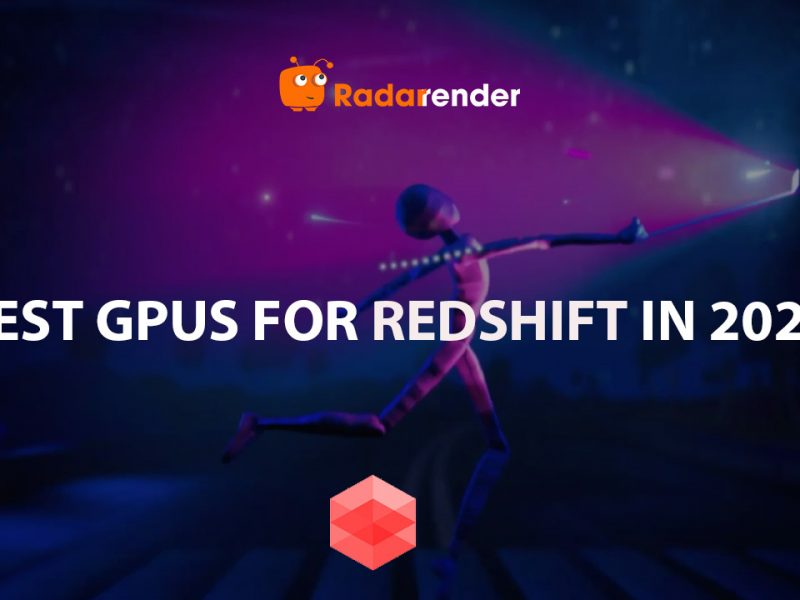Enscape vs Lumion vs Twinmotion: Pros, Cons, and Key Differences
Choosing the right real-time rendering software is critical for architects, designers, and 3D artists. In 2025, three tools dominate the discussion: Enscape, Lumion, and Twinmotion. Each offers unique workflows, rendering quality, and usability. But which one is best for you? In this guide, we’ll compare Enscape vs Lumion vs Twinmotion, covering their pros, cons, and key differences, so you can decide which visualization software suits your projects, hardware, and budget.
Overviews
Enscape
Enscape is a real-time rendering plugin that integrates directly with CAD/BIM software such as Revit, SketchUp, Rhino, ArchiCAD, and Vectorworks. It’s designed for quick design iterations, immersive VR walkthroughs, and smooth integration with your modeling workflow.
Twinmotion
Twinmotion, developed by Epic Games and powered by Unreal Engine, offers a balance between speed and quality. With an intuitive interface, live synchronization with major 3D modeling tools, and access to the Quixel Megascans library, it’s a strong contender for both interiors and exteriors.
Lumion
Lumion is a standalone rendering program focused on high-quality, cinematic architectural visualization. It’s known for its rich library of assets, environmental controls, and polished output, making it a favorite for exterior renders, landscapes, and final presentations.
Comparison
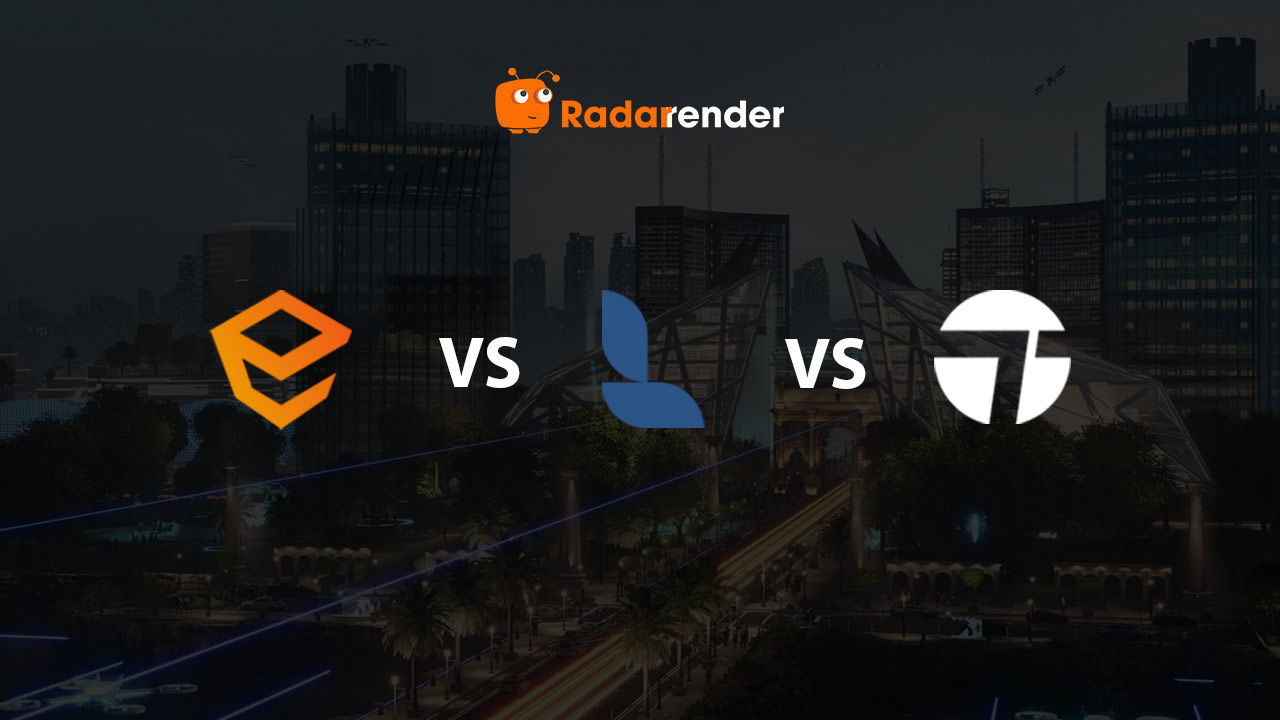
Ease of Use
- Enscape: Extremely beginner-friendly, runs inside your modeling software.
- Lumion: Steeper learning curve with more advanced settings, but greater control. Regarding the amount of available tutorials, Lumion has more to offer.
- Twinmotion: Easier than Lumion; intuitive drag-and-drop system. For Twinmotion, you won’t find any good in-depth courses whereas Lumion has plenty.
Rendering Speed & Performance
- Enscape: Fastest for real-time previews. It’s good for concept design and previews.
- Lumion: Heavier and more demanding. Slower in comparison, especially for very high detail or big scenes. But for final renders, it shines by providing high-quality, polished renders.
- Twinmotion: Balanced speed and quality; smooth enough for live presentations. Faster than Lumion in many interactive tasks, but quality settings or large scenes can slow it down.
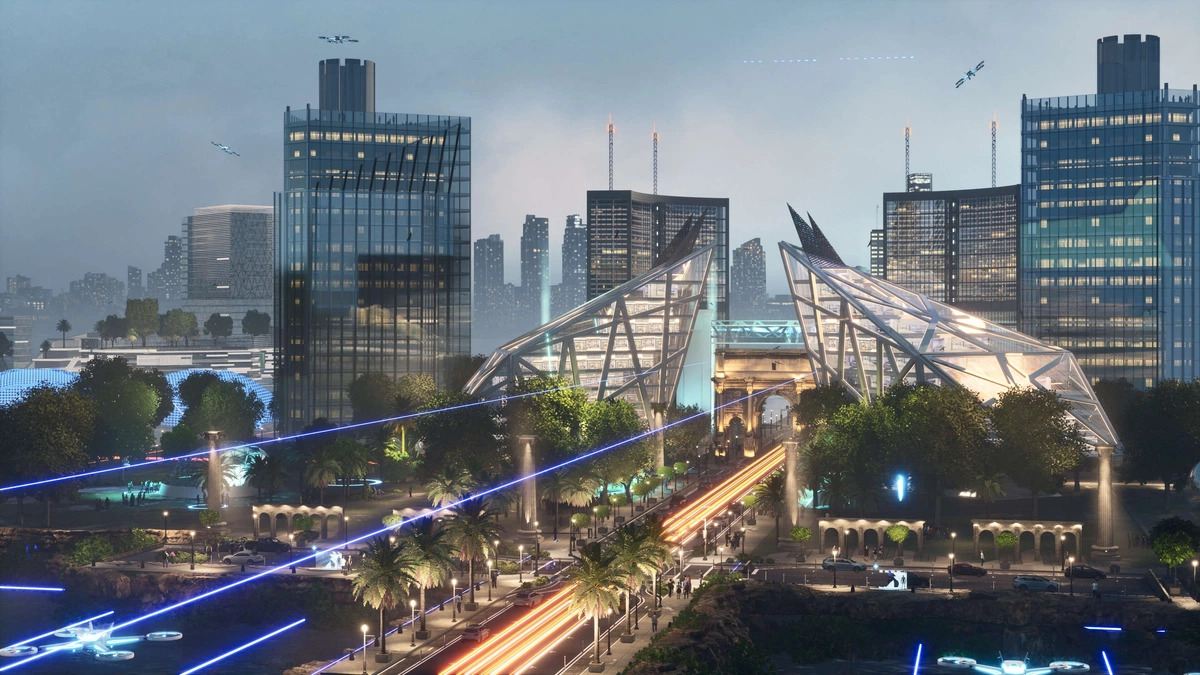
Source: twinmotion.com
Visual Quality
- Enscape: Clean, realistic visuals. Solid, especially for interiors or when light/materials don’t need huge complexity. There are some limitations in advanced weather, vegetation, etc. Reflections, glass, etc., are decent but may need tweaking.
- Lumion: Industry-leading photorealism with dramatic lighting, weather, and cinematic effects. Strongest among the three for highly polished output: detailed materials, lighting, post-processing, large asset & material libraries.
- Twinmotion: Good realism, rapidly improving thanks to Unreal Engine tech.
Asset Library & Materials
- Enscape: Good, especially for interiors. Decent library but smaller than Lumion. Because you stay inside CAD tools, you often import assets from elsewhere.
- Lumion: Massive built-in asset library, especially for vegetation, skies, and entourage. Very large, varied, detailed: vegetation, landscape props, people, entourage, etc. Strong for exterior/landscape context.
- Twinmotion: Growing asset library. Integration with Quixel Megascans (Epic) helps. Many external assets are available but built-in options might be less exhaustive than Lumion.
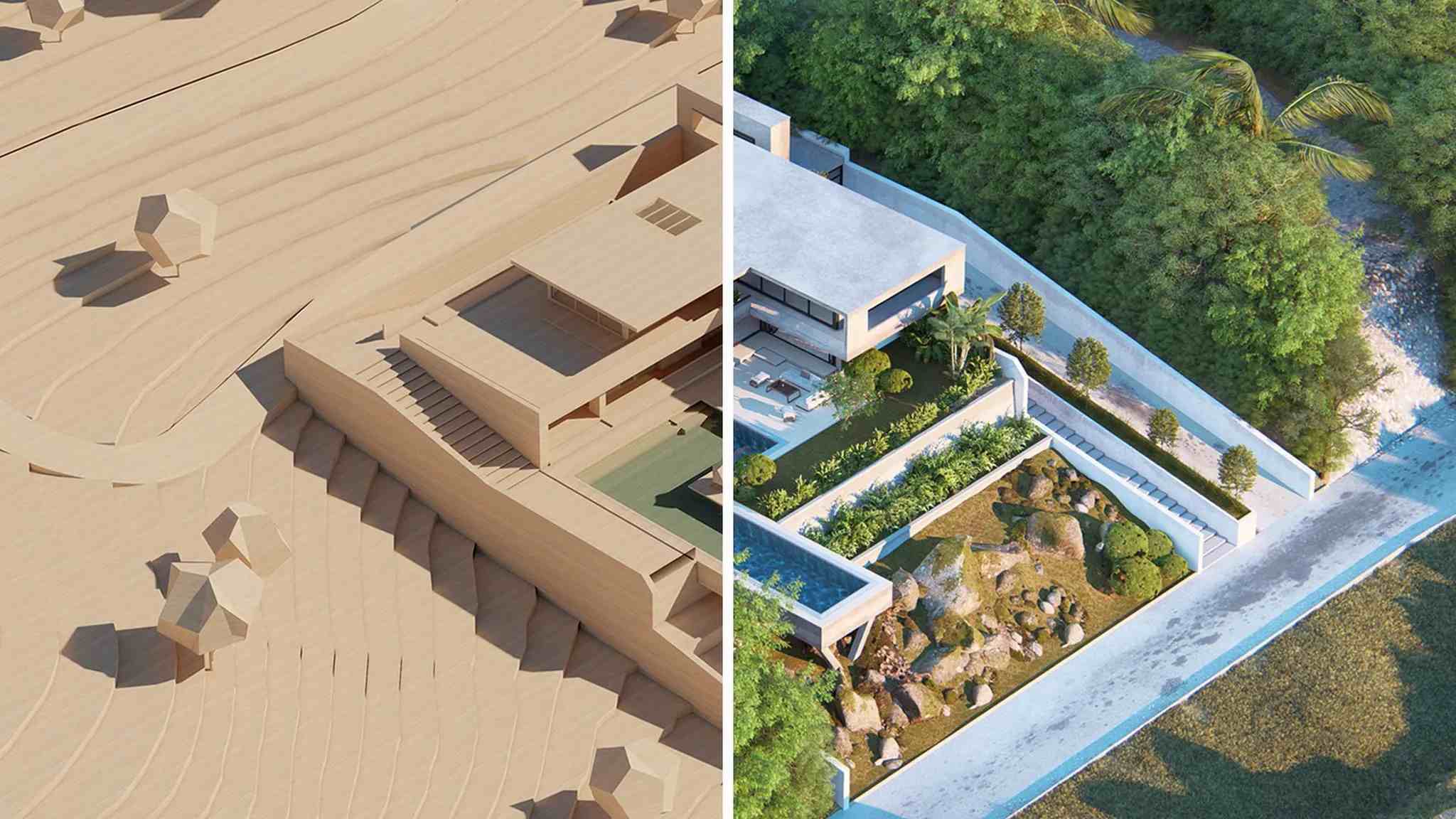
Source: Lumion
Integration with CAD/BIM Tools
- Enscape: Strongest integration, direct plugin with live updates. Strong point. Direct plugin workflows (Revit, SketchUp, Rhino, etc.). Changes in model often reflect real-time in Enscape. Less exporting/importing.
- Lumion: Standalone. Has LiveSync/real-time connections with some modeling tools, but often requires export or sync steps. More break between modeling and rendering in workflow.
- Twinmotion: Supports live sync, works well with popular modeling tools. Also benefits from Epic’s platform.
Hardware Requirements
- Enscape: Moderate GPU needs. Runs well on mid-range setups. Since it’s often used “inside” CAD tools, but high-quality settings, VR, etc., will still demand a good GPU.
- Lumion: Often more demanding. Complex scenes, high resolution, detailed assets, and post-processing require more powerful hardware.
- Twinmotion: Good hardware still helps, but for many tasks, you can work with less, especially for preliminary renderings.
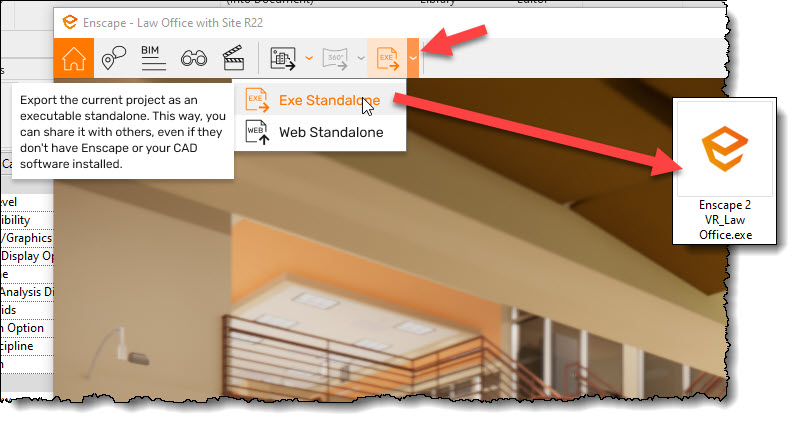
Source: Bimchapters
Pricing
- Enscape: Subscription-based, generally affordable for firms. Generally more affordable (depending on license type).
- Lumion: Higher cost for full feature set; big asset libraries, etc., come with Pro or higher tiers. Frequent upgrades.
- Twinmotion: More budget-friendly, free or lower-cost options (especially for students or small firms), plus strong value for what you get.
Use Cases
- Enscape: Fast design reviews, early stage work, VR/AR walkthroughs, interiors, quick client feedback, projects where design changes are frequent.
- Lumion: Final presentation, exterior renders, highly detailed landscapes, marketing visuals, high-impact architectural context, animations.
- Twinmotion: A balance: good for both interiors & exteriors, fast iteration, presentations where you need both speed and decent polish; smaller to medium scale projects; when you want flexibility without spending as much time/tuning.
Conclusion
When comparing Enscape vs Lumion vs Twinmotion in 2025, the choice depends on your workflow, project type, and hardware.
- Enscape shines for its simple interface and integration.
- Lumion dominates for polished, cinematic renders.
- Twinmotion balances usability and affordability.
No single software is “best” for everyone but knowing their pros, cons, and key differences will help you choose the right rendering solution for your architectural visualization needs.
Frequently Asked Questions
- Is Enscape easier to use than Lumion?
Yes. Enscape has a smoother learning curve since it runs inside CAD software, while Lumion requires more setup and has advanced features that take time to master.
- Which rendering software is best for beginners?
For beginners, Enscape and Twinmotion are more user-friendly. Lumion is more advanced and may take longer to learn.
- Which software has the most realistic rendering quality?
Lumion currently offers the highest photorealism with its advanced lighting, materials, weather effects, and massive asset library.
- Is Twinmotion free to use?
Yes. Twinmotion is free for students, educators, and certain non-commercial uses. For professionals, Epic Games offers affordable licensing compared to Lumion.
- Do I need a powerful computer for Lumion, Enscape, or Twinmotion?
Enscape: Runs well on mid-range GPUs.
Lumion: Requires a powerful PC with a high-end graphics card.
Twinmotion: More balanced, can run on mid-tier systems but benefits from strong hardware.
- Can I use Enscape, Lumion, or Twinmotion with Revit or SketchUp?
Yes, all three support Revit and SketchUp. However, Enscape has the best direct integration, allowing real-time updates without exporting.



